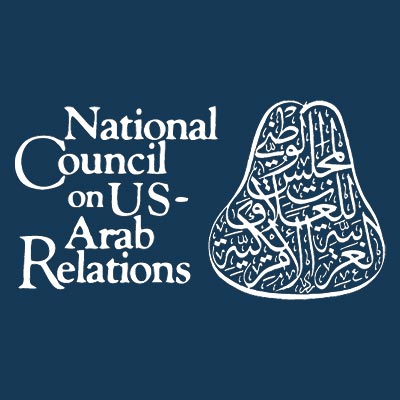He was for the longest time my buddy. We often laughed at the thought that we could have been twin brothers from different mothers, despite the fact that Jim was from Wisconsin and I was from Virginia. We were almost the exact same age. We were U.S. Army veterans of the same enlistment program. We each bore scars at the same place on our right knees from nearly identical high school athletic injuries.
We were both note-taking aficionados, opting, as such, to write most, if not all, of our empirical reports and publications based less, if at all, on library research but rather on firsthand accounts, which we knew at the time were priceless. Indeed, they resulted from the fact that we benefited from privileged access to meetings and briefings with some of Arabia and the Gulf’s top policymakers, decision makers, and strategic analysts that few others enjoyed.
In the 1970s, the two of us even co-choreographed nationwide public speaking engagements for a former guerrilla leader-turned-government official. To this day, the official has never forgotten or been unappreciative of the experience. In June 1982, in the company of the late UT-Austin geographer Paul English, we travelled together to Arabia and the Gulf – to Oman, then the UAE, then Bahrain, and then Saudi Arabia.
Each of us was and remained to the end a baseball freak; before we even met we had separately memorized the major league players’ names of a bygone era, their positions, their teams, their batting averages, their pitching records, their nicknames, their greatest feats – you name it. Often, instead of addressing each other in written letters or telephone calls with our real names, we used made-up ones like Duke Snider, Jerry Priddy, Dizzy and Paul Dean, Jackie Robinson, Harry “The Cat” Brecheen, Richie Ashburn, Del Ennis, and Willie Mays.
When Jim in 1976 invited me to teach at UT-Austin in the university’s Center for Middle East Studies a course on Arabia and the Gulf, I gladly did so and enjoyed it thoroughly, not least because it provided an opportunity for our respective families to get to know one another and, now and again, a chance for us to play a pickup baseball game with six players – his two children and mine plus ourselves – on one of the local diamonds.
Jim, at UT-Austin, was then and for many years before and after at the heart of what in the view of many was America’s finest center for Middle East studies – because he, John Alden Williams, Caroline Williams, Hafez Farmayan, Paul English, Elizabeth Warnock Fernea, Bob Fernea, Robert Stookey, Victorine and Peter Abboud, Carl Leiden, Robert Miller, and others had worked hard to make it so.
In time, however, area studies centers elsewhere became more prominent. One such center, in Williamsburg, Virginia, successfully persuaded Jim to relocate there. Texas’ loss was the College of William and Mary’s gain. Jim, appointed Founding Director of the Reves Center for International Studies at the college, built the program entrusted to his leadership into an internationally renowned center of excellence.
Jim did so in association with the likes of Lois Critchfield, Najeeb Halaby, John Alden and Caroline Williams, and Peter Bechtold. With Jim in the forefront of their efforts, they also supported a robust Arabic language program. In addition, they recruited an impressive number of Middle East area studies students who participated and often performed outstandingly well in the National Council on U.S.-Arab Relations’ Model Arab League programs.
Beyond his gifts for writing clear and forthright prose, Jim was a charismatic and captivating speaker. Anyone who ever heard him address a crowd can attest to that. A favorite flourish of his, when he often visited Washington to speak at one of the government or public affairs institutes to which the two of us were sometimes invited to make back-to-back appearances, was to start off as though he were throwing ice-cold water on the audience.
Deliberately affecting a slight Western drawl, Jim would frequently start one of his public addresses with, “Well, folks, I don’t know what you’ve been hearing with regard to what’s been going on in the region of late, but this here’s an outsider from out of town who’s come riding in to tell you what’s really going on, how it really is!” And away he would go.
Jim was as entertaining in these regards as he was informative and insightful. For example, he used the words and concept of “political Islam” much earlier than others and not without controversy. Yet the phrase itself caught on and remains to this day for many an orienting frame of reference.
Of the symbolic and proverbial American eagle, on one hand, and the Iranian lion, on the other – paraphrasing his classic standard, “The Eagle [the United States] and the Lion [Iran],” a widely acclaimed portrayal of the American embassy in Tehran in the 1960s and 1970s – he was ever the former, always as patriotic as could be, but at times taking unbridled delight and being serious when he metaphorically roared like the latter.
It was a measure of the high esteem and degree of trust and confidence in which Jim was held by diplomats, analysts, and other foreign affairs practitioners that in the early weeks before the return to Tehran from Paris of the Ayatollah Rouhollah Khomeini in February 1979, he was for a time under consideration for the post of U.S. Ambassador to the Islamic Republic of Iran. That he was not named to the position could well have been as close as anything to proof of the adage that in life there are often blessings in disguise.
Ever with solid scholarship as his forte, Jim was never unmindful of the importance of going beyond and behind the headlines in his writings and public speaking. This was especially the case with regard to Iran, the country in which and among whose people he and his Ann had literally come to love. It was there that they had lived, he had studied and conducted fieldwork for his doctoral dissertation at Princeton, and to which he would subsequently focus the bulk of his richest research, writing, and publications.
In the months leading up to the shah hitting the fan, so to speak, Jim was one of the few American nongovernmental personnel who enjoyed privileged access to and an understanding of the position and role of the shah’s wife, Empress Farah Diba. He, more than many, was aware of the possibilities – remote, momentary, and limited as they were – that she might somehow lend, if nothing else, a grace note as the curtain began to fall upon the country’s monarchical structure and its system of political dynamics. His bringing her to light in a manner that few others did or knew how to do says much about Jim in terms of how he was often onto something different, unique, and insightful that others had missed or deliberately downplayed and overlooked.
Certainly, among myriad post-shah memoirs, diplomatic histories, and retrospective accounts of pre-revolutionary Iran, as well as the period immediately following the dynasty’s demise, the queen’s memoir, based heavily on her diaries, is must-reading not least to appreciate her sharply honed perceptions and accounts of what the final days were like for the country’s dynastic rule and for her late husband and herself. Among outsiders in general, and certainly among Americans in particular, Jim offered valuable early insights into the Iranian queen’s version of what transpired, shedding light on a rich trove of historical details that might not have been noticed and appreciated as soon as they were and for what they are: an extraordinary firsthand look inside the last days of Iran’s rulership from the privileged personal vantage point of the country’s first lady.
Jim was not entirely confined to Middle East-related scholarship. At times, he stood apart from other Islamic world scholars. His Asian interests were a case in point. Indeed, few were aware of the degree to which elites in various government ministries and major international corporate entities in Japan – with its economy long dependent upon Iran, Iraq, Kuwait, Qatar, Saudi Arabia, and the UAE for vast quantities of its energy imports – became enamored of Jim. They regularly sought to tap into his vast store of Middle East studies, international studies, political science, and foreign relations knowledge and understanding to such an extent that he was frequently an official guest for rounds of meetings, briefings, and lectures in Tokyo and elsewhere.
Jim was a fine political biographer as well. Indeed, his account of the life and times of the late U.S. Johnson Administration Under-Secretary of State for Political Affairs George Ball is one of Jim’s best works. Indeed, it is so superbly written, so thoroughly researched, so meticulously documented, and so scrupulously fair in its treatment and assessment of one of America’s foremost 20th-century public servants that it can easily be understood, albeit tragically, why it was so widely and deliberately ignored by the country’s literary elite at the time. The latter were not above or below reassuring one another of what, in their view, passed at the time for established thought, or considered opinion, or conventional wisdom.
A concerted movement among Ball’s detractors, which Bill documented, never forgave him for his refusal to accommodate the Zionist project’s goals. They faulted him severely once he realized and refused to remain silent about what he had experienced directly as to how the interests of another country repeatedly trumped America’s, despite the latter being the former’s unabashedly greatest financier, protector, and overall benefactor. For all of Ball’s truth telling and Bill’s chronicling it, along with uncommon background, context, and understanding, the book’s searing insights largely fell on deaf ears. Ball’s and as a matter of course Bill’s critics went to great and effective lengths to ensure that the book was panned when and where it was reviewed, if at all, and, when not, which was pervasively the case, to guarantee that it would remain largely unknown.
Many who appreciated what Ann and Jim Bill were to one another knew that their two names had to be at the top of any list of two romantics conjoined for life. And if there were ever any two children who aspired to excel in their own right but, whenever possible when they were young, were always delighted to be able to do so with or near their mom and dad, it has to have been Ann and Jim Bill’s daughter and son. Many are those privileged to have known all four who believe that few progeny could have been more in love with and appreciative of their mother and father as were Ann and Jim’s two children. And if there are two other children who have basked in their mother and father’s delight as much as Ann and Jim’s children basked in their parents’ delight, the names of those two children are a mystery.
Jim was an outstanding scholar, an insightful analyst and writer, and a dear friend. We will all miss him.
Dr. John Duke Anthony is the Founding President and CEO of the National Council on U.S.-Arab Relations in Washington, D.C.

